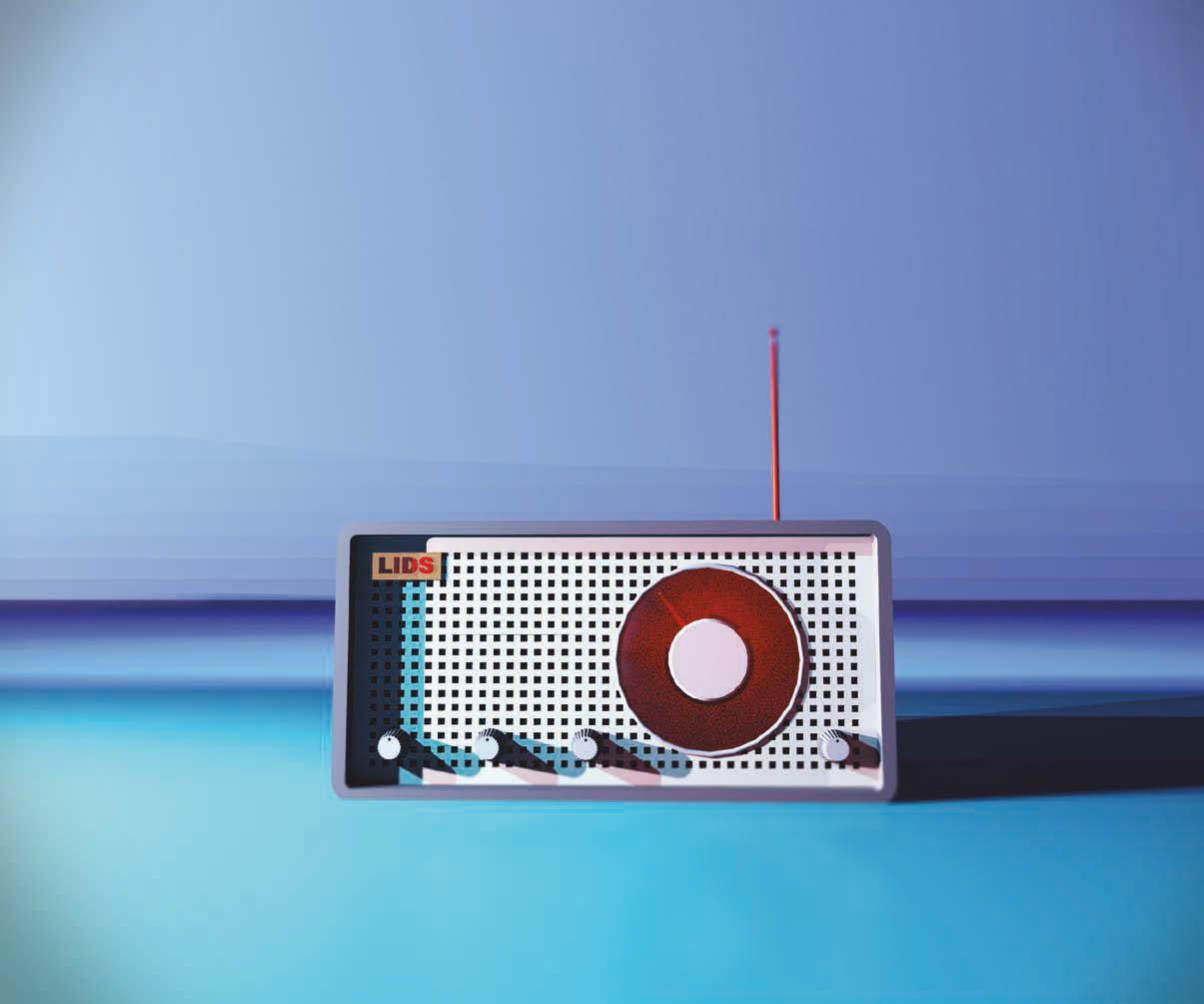

Wireless World
Editor: Jennifer Donovan
Design & Illustration: Michael Lewy
Writers: Gillian Devereux
Rachel VanCott
Ashley Yeager
Photography credits:
Portrait of Patrick Jaillet by Donna Coveney. Portrait of Yury Polyanskiy by Patsy Sampson. Portraits of Amir Ali Ahmadi, Jon How, Brian Jones, and Watcharapan Suwansantisuk by Michael Lewy. Event page photos by Andrew Mastin, Mitra Osqui, and Yuan Shen. LIDS Student Conference and Advisory Committee Meeting photos by Yuan Shen.
Massachusetts Institute of Technology
Laboratory for Information and Decision Systems
77 Massachusetts Avenue, Room 32-D608
Cambridge, Massachusetts 02139
http://lids.mit.edu/
send questions or comments to lidsmag@mit.edu
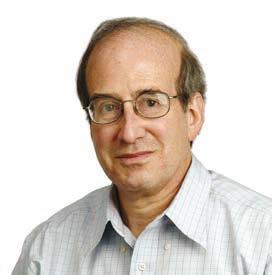
A Message from the Director
Welcome to the Fall 2012 volume of LIDS|ALL. As in past issues, we have assembled a set of interviews and news that provide a picture of the LIDS community in all of its dimensions. A quick perusal of the past few years’ issues of LIDS|ALL, this new volume, and the news items that have appeared on the LIDS webpage and in MIT news releases make it clear that LIDS is not only an exciting and fulfilling place for all who call it home, but also an intellectual community whose contributions to and leadership in the broad field of information and decision systems continues to grow and to receive significant recognition both within MIT and throughout the world. We are delighted to share these glimpses into our professional home.
In this issue you will find an interview with Brian Jones, the individual who keeps all of our IT systems running and deals with the (plaintive and always urgent) questions and requests from all of us with a calm presence and speedy response. You’ll also find interviews with two of our senior graduate students, Yola Katsargyri and Watcharapan Suwansantisuk, who have made important contributions to LIDS not only in their individual research but also in their service to LIDS. There is an interview with Amir Ali Ahmadi, who, until this past September, was one of our graduate students and has now joined us as a postdoctoral researcher. You’ll also find interviews with two of our faculty, Prof. Jonathan How of MIT’s Department of Aeronautics and Astronautics and Prof. Patrick Jaillet of the Department of Electrical Engineering and Computer
ABOUT LIDS
The Laboratory for Information and Decision Systems (LIDS) at MIT, established in 1940 as the Servomechanisms Laboratory, currently focuses on four main research areas: communication and networks, control and system theory, optimization, and statistical signal processing. These areas range from basic theoretical studies to a wide array of applications in the communication, computer, control, electronics, and aerospace industries. LIDS is truly an interdisciplinary lab, home to about 100 graduate students and post-doctoral associates from EECS, Aero-Astro, and the School of Management. The intellectual culture at LIDS encourages students, postdocs, and faculty to both develop the conceptual structures of the above system areas and apply these structures to important engineering problems.
Science. And you’ll hear from Prof. Anant Sahai of the University of California, Berkeley, one of our illustrious and supportive alumni.
In addition, you’ll find information about honors and awards received by members of the LIDS Community including the very well deserved School of Engineering Infinite Mile Award presented to our Assistant Director for Administration, Debbie Wright. You will also find information on and photos of many of the activities during this past year including the LIDS Student Conference. I wanted to take this opportunity, as well, both to welcome Prof. Yury Polyanskiy who joined the EECS faculty and LIDS this past fall and to let you know about major initiatives spearheaded by LIDS faculty since our last issue: Prof. Emilio Frazzoli is now the Principal Investigator of the Future Urban Mobility Interdisciplinary Research Group in the Singapore-MIT Alliance for Research and Technology (SMART), Prof. Munther Dahleh has led the formation of MIT’s new Center for Systemic Risk, and Prof. Asuman Ozdaglar has been instrumental in the formation of the new Connection Sciences Virtual Center at MIT. All of these initiatives have two things in common: They deal with crucial and emerging areas in which cutting-edge research is dearly needed, and LIDS is playing a leadership role in each.
One of the important activities during this past year was the visit of our Advisory Committee, a group consisting of four very distinguished individuals: Dr. Henrique Malvar, Chief Scientist of Microsoft Research; Prof. Manfred Morari, Head of the Automatic Control Laboratory at ETH in Zurich, Switzerland; Prof. H. Vincent Poor, Dean of the School of Engineering and Applied Science at Princeton University; and Prof. Pravin Varaiya, Department of Electrical Engineering and Computer Science at the University of California, Berkeley. It is meaningful to all of us that these accomplished individuals have given their time to come and listen to and advise us. As I prepared for their visit this past April, I looked over the presentation I gave to them during their first visit three years earlier. The contrast with what I presented in April 2012 is stunning. While LIDS was strong and vibrant in 2009, the picture of LIDS in 2012 is even stronger and more dazzling. I cannot imagine working in a better or more exciting place than LIDS, and I am grateful every day that I do.
It is a privilege for me to be Director of this exceptional organization, and I believe that you will understand why I feel that way as you peruse this issue of LIDS|ALL.
Sincerely,

Alan Willsky, Director
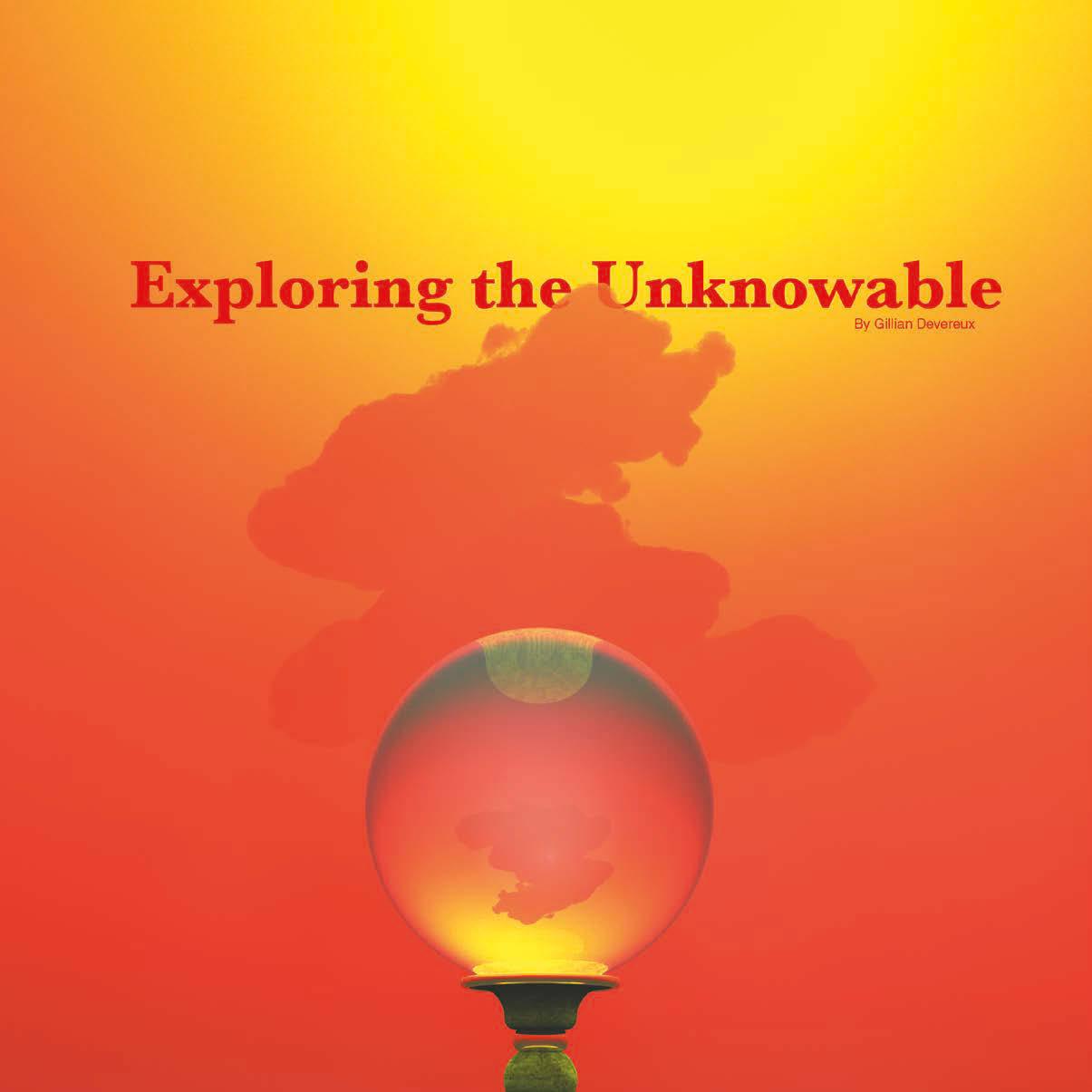
Everyone wants to know the future. Some wonder only about their personal fortunes— whom they will marry, where they will work, when they will find happiness. Others attempt to predict the future for more pragmatic reasons, hoping to increase profit margins or decrease defense vulnerabilities. Prof. Patrick Jaillet, who is the Dugald C. Jackson Professor in the Department of Electrical Engineering and Computer Science, the Co-Director of the MIT Operations Research Center, and a member of the Laboratory for Information and Decision Systems at MIT, has devoted much of his academic career to helping people make decisions without knowing the future.
The future is, of course, largely unknowable. Unfortunately, this uncertainty does not eliminate the need to make decisions in the present that take into account the likely impact of those decisions on the future. As a result, information that can flesh out the probabilities of these impacts and the likelihood that a scenario will bear out; information that can help give a theoretical shape to the unknowable, commands a high premium. But information collected without purpose or proper analysis is far less useful than information collected within the parameters of a well-designed dynamic research problem. Patrick frequently uses a small, hypothetical robot to help illustrate this principle.
In situations where it is important to determine the safest or quickest travel route, for instance, potential obstacles or hazards must be
identified. When the terrain is unfamiliar or potentially dangerous, automated vehicles or robots can be sent out to collect data. If the robot only follows one predetermined path, it will take him a long time to collect useful data. More sophisticated programming, such as an algorithm that instructs the robot to turn right or left every time his path is blocked, allows for faster, more dynamic approaches. This leads to the development of data-driven algorithms and methodologies with provable properties and numerous practical applications.
With his collaborators from the SingaporeMIT Alliance for Research and Technology (SMART), Patrick has used real-time data from disparate sources to create novel algorithms that can predict paths in dynamic transportation networks and provide on-demand route guidance in uncertain or unpredictable situations. Such algorithms help military and government agencies position and employ emergency response vehicles and personnel, dispatchers improve the overall performance of taxi fleets, and on-demand guidance systems identify the quickest and safest way for drivers to reach their destinations.
Patrick’s current research interests have evolved from classical combinatorial optimization problems like the Traveling Salesman Problem (TSP), which involves cities, any two of which are connected by a direct route (or straight line) on a map, and a salesman who wants or needs to visit every city while keeping
his travel costs and time away from home as low as possible. In theory, finding the optimal itinerary requires the salesman to explore all possible routes, the number of which increases exponentially as the number of cities increases. The solution, while finite, remains impossibly large. As an alternative, researchers can develop algorithms designed to calculate a solution that comes extremely close to the optimal solution in a significantly shorter amount of time.
Patrick and some members of his research team, which includes Xin Lu and Swati Gupta,
already in progress before returning to the mail center to retrieve and deliver the new package.
Patrick Jaillet has devoted much of his academic career to helping people make decisions without knowing the future.
doctoral students at the MIT Operations Research Center, and Dawsen Huang and Shen Shen, graduate students in Electrical Engineering and Computer Science, apply the same principles used to solve this historical problem in an online context, driven by incomplete and unknown data sources and time sensitive revenue streams. Patrick uses a Federal Express driver in the middle of his delivery route as an example. If a new customer calls in an order located somewhere close to the current delivery path, what is the dispatcher’s best course of action? The robust algorithms designed by Patrick and his researchers help determine if it is more efficient and cost effective to send out a second driver, have the first driver interrupt his current deliveries to pick up the new package, or have the first driver complete the deliveries
A similar canonical problem involves bipartite matching, where a given set of nodes, or vertices, on a graph must be matched to other nodes with an edge (or straight line). This second group may also consist of a complete, visible set, or they may appear individually, at random and unpredictable intervals. An early model of this problem, sometimes referred to as the “marriage game,” attempts to match a set of single males to a parallel set of single females. Edges, or lines, are drawn between men and women who like each other. If no two edges are adjacent, and each person is incident to an edge, the match is considered to be perfect. Perfect matches are not always possible, however, and thus many algorithms merely attempt to “marry” the maximum number of people and achieve the maximum amount of “marital bliss,” or customer satisfaction.
In his research, Patrick applies this classic model to online resource allocation problems, the kind created when the distribution of content, bandwidth, advertising space, and the like depends on unpredictable user demands. Services like Netflix which offer on-demand streaming of movies and videos have difficulty predicting which movies will be requested by which users
at which times. Although historical and realtime data can help mitigate this unpredictability problem, online vendors need tools to help them identify, interpret, and anticipate user request patterns. This, in turn, allows for an efficient and profitable allocation of resources. The algorithm solutions designed and analyzed to address online versions of bipartite matching problems can be used to streamline online auctions, maximize the benefit of the sponsored advertising used by services like Google AdWords and AdSense, and improve content delivery load balancing. In addition to Xin Lu, other members of Patrick’s research team working on these problems include Vahideh Manshadi, a post-doc in the Department of Electrical Engineering and Computer Science and the Operations Research Center, Andrew Mastin, a doctoral student in Electrical Engineering and Computer Science, and Rico Zenklusen, a post-doc working in Math and Electrical Engineering and Computer Science.
Theoretical investigation of classical mathematical archetypes can even lead to medical miracles. A recent New York Times article by Kevin Sack, “60 Lives, 30 Kidneys, All Linked”, describes how doctors at 17 different hospitals in 11 different states used an algorithm similar to the ones designed in LIDS, and inspired by the same classical matching problems Patrick uses in his research, to link 30 patients in desperate need of a kidney with 30 volunteer donors.
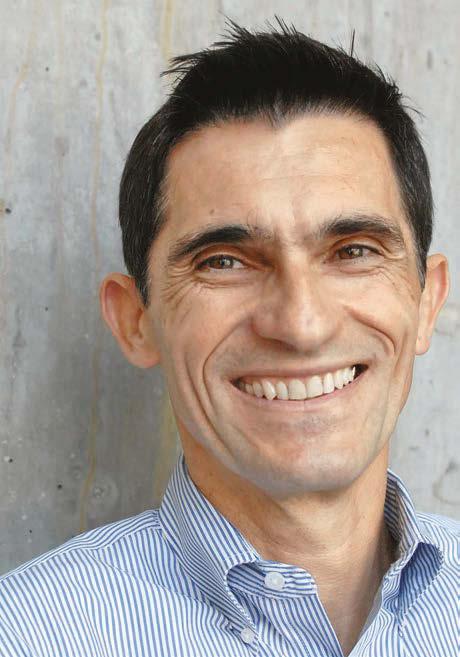
The United Network for Organ Sharing (UNOS), the government agency overseeing organ transplants in the United States, reports that there are more than 90,000 people currently waiting for new kidneys. Only about 17,000 people receive kidney transplants each year, while 4,500 on the waiting list die. Many patients who need kidney transplants have friends or relatives willing to donate a kidney. However, immunological incompatibilities often prevent these volunteers from donating to their loved ones.
Over the past seven years a number of hospitals, including Johns Hopkins and Massachusetts General, have participated in paired exchanges, sometimes called domino exchanges, where volunteers donate kidneys to strangers in order to secure another kidney for their friends or relatives. Such chains require complicated calculations and rely on algorithms similar to the ones used by online dating services, albeit with much higher stakes.
According to Sack’s article, the algorithm used by the National Kidney Registry “assembles up to a million viable combinations at a rate of 8,000 per second” and then “ranks the possible combinations by the number of transplants they would enable, with weight given to chains that find kidneys for hard-to-match patients and those who have waited a long time”. This data led to 175 successful transplants in 2011, including the 30 person paired exchange known a s Chain 124, which is the largest paired exchanged performed to date.
A n examination of Chain 124 revealed that donor chains and other forms of paired exchanges resulted in 429 kidney transplants in 2010. All of these transplants involved a live donor, which dramatically decreases the chances of organ rejection or early organ failure. In addition, donors in these chains have the opportunity to help two people—the person who receives their kidney and the loved one who receives a kidney from that recipient’s friend or family member.
Like so many of Patrick’s examples, this practical application of online matching saves both time and money. Patients can bypass the long, frustrating waiting period associated with traditional organ transplants and significantly reduce the annual cost of their medical treatment. Medicare statistics estimate that the average dialysis patient spends $500,000 to $1 million on medical care each year, while a kidney transplant operation only costs between $100,000 and $200,000.
Using bipartite matching algorithms to orchestrate organ donation and transplants is one of the most dramatic applications for the research conducted by Patrick and his team, in particular Vahideh Manshadi, in collaboration with Prof. Itai Ashlagi from the MIT Sloan School. Like so many of his colleagues in LIDS, Patrick looks into the future to find practical, economical solutions to complex, real-world problems. His investigations into online and data-driven optimization problems have allowed his research group to develop mathematical and theoretical tools with practical applications that appear to be as limitless as the future.
LIDS Welcomes Yury Polyanskiy!
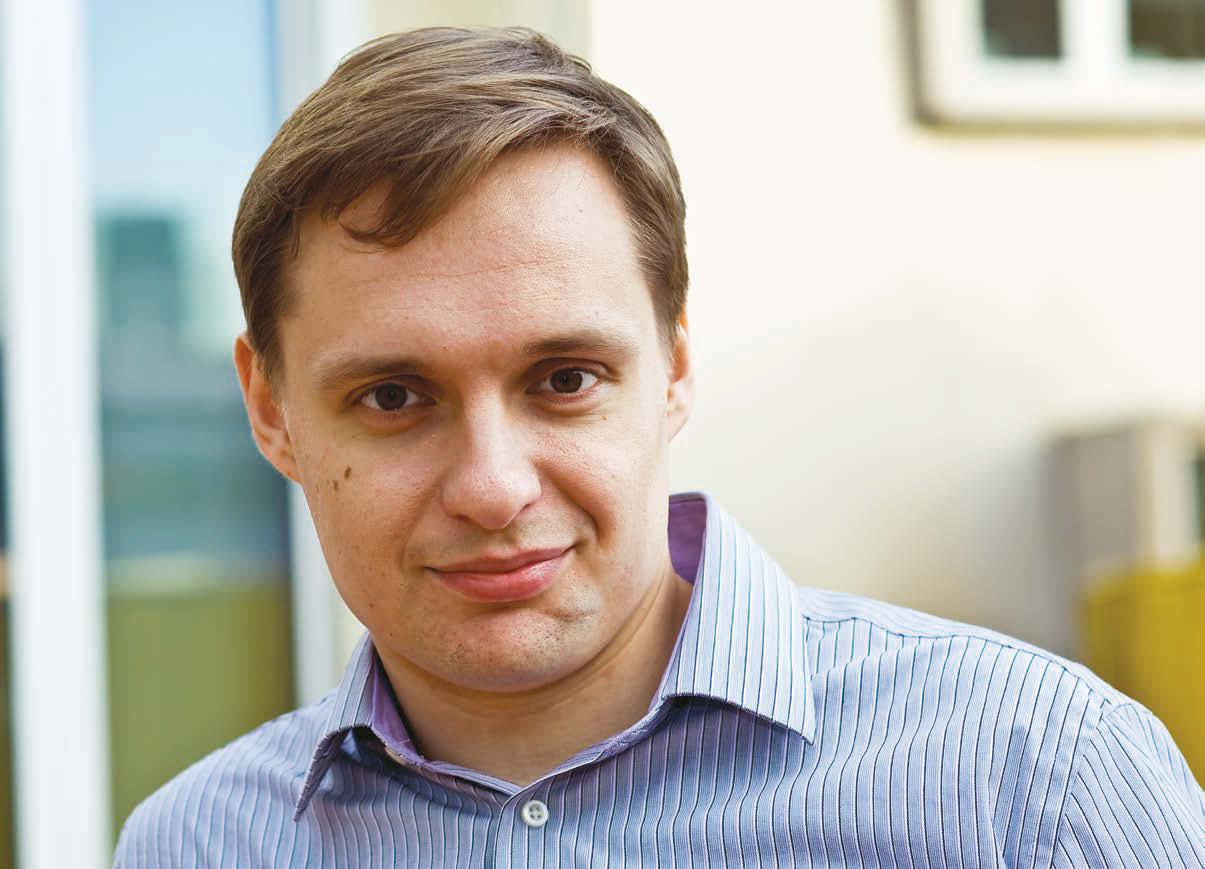
It is with great enthusiasm that we welcome Professor Yury Polyanskiy to LIDS. Yury received the B.S. and M.S. degrees in applied mathematics and physics from the Moscow Institute of Physics and Technology (MIPT) in 2003 and 2005, respectively. In 2010 he received his Ph.D. in electrical engineering from Princeton University. Yury’s research interests include information theory, coding theory and the theory of random processes. Please join us in welcoming Yury as one of the newest members of the LIDS Community!
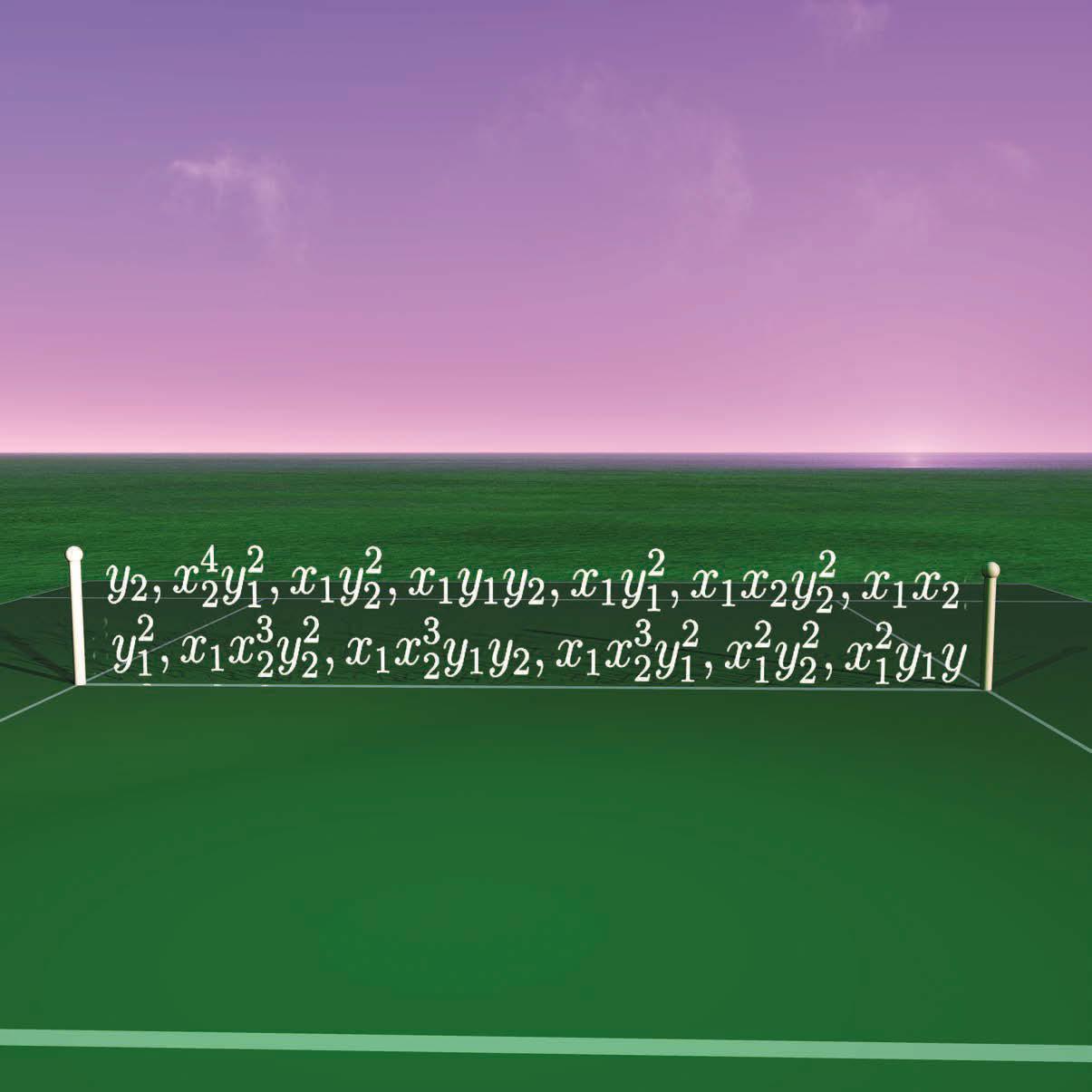
Set to Optimize
By Ashley Yeager
Amir Ali Ahmadi’s dream throughout childhood was to become a professional, world-class tennis player. Growing up in Tehran, he first picked up a racket at age seven, playing in a summer camp run by the man who was then the head coach of the country’s national team. By 11, Amir Ali was playing competitively, and at 17, he played for the Iranian National Junior Team. Yet, he was always the top student at school.
“I pretty much gave up on professional tennis when I moved to the U.S. when I was 18. I gave it a little try at the beginning, won a couple of little tournaments here and attended the Bollettieri Tennis Academy in Florida for a short period,” he says. “But soon I realized that my chances were very low for going pro, so I switched my focus to school.”
Despite his early love of tennis, Amir Ali had also developed an interest in math and science at a young age. He started to focus on these interests during his college years at the University of Maryland. A defining moment for him, he recalls, was in a computer programming class during his freshman year. His professor gave the class an assignment to implement an ingenious algorithm, which could multiply two two-by-two matrices with only seven multiplications instead of the usual eight. Amir Ali wasn’t really interested in the programming assignment but in the algorithm. “In the years prior to this class, I had multiplied hundreds of matrices, and it bothered me that I never once asked whether
there was a way to do it with fewer multiplications,” he says. Discovery that a faster way was possible made Amir Ali think about how he approached other mathematical problems.
After taking another class on signals and systems theory, he says he was convinced he wanted to work on the mathematics of electrical engineering and computer science. In 2006, he graduated first in his class in both of his majors – mathematics and electrical engineering. Preparing to continue his studies, he had applied to several graduate schools and choosing where he would attend was tough at first. But when Amir Ali met LIDS professor Pablo Parrilo on a recruiting visit to MIT, he says he “knew right away” that he wanted to work with him.
“Pablo is passionate and energetic about his work. He is super smart, and after just one meeting I knew he’d be a great advisor,” Amir Ali says.
He accepted a research assistantship from Pablo and together, the pair began to look at some algorithmic problems in systems and optimization theory. “There’s lots of optimization in the real world. It’s everywhere,” Amir Ali says. A NASA scientist, for example, might want to move a group of satellites into a specific configuration to carry out a mission while making sure that they don’t crash on the way there. But to make those movements costs fuel and, depending on the route chosen, time. “Whatever you do, you have to do it with some cost,” Amir Ali says, offering
another example of having doctors on call in the emergency room. If there are too many doctors and not many emergencies, then the doctors are paid without doing work. The cost is too high, and money is wasted. But if there are too few doctors, there’s a long wait for patients and the cost is time. “Optimization is about balancing these trade-offs in the most efficient and effective way possible,” Amir Ali says.
He adds that in these examples, scientists can plug the scenarios into a computer and calculate the optimal path of the satellites or number of doctors. Amir Ali, however, looks at problems like these in their pure mathematical form. He doesn’t deal directly with specific scenarios, but instead wants to develop tools that scientists can use to optimize a wide range of systems arising in different domains.
Unfortunately, not all optimization problems are so easy to solve, and, in some cases, there is no efficient algorithm to provide the optimal solution. This is where Amir Ali’s work comes into play. He studies what makes some optimization problems easy to solve and what can be done to deal with the problems that are provably hard to solve.
Problems described by convex functions form an important class of optimization problems that scientists know how to solve efficiently. Like a convex lens, the graph of a convex function swoops downward from both sides, forming the shape of a bowl or the bottom of an unbroken egg.
When a function takes this shape, finding the overall minimum value is easy and quickly gives scientists the optimal solution to their problem.
Functions that are not convex, however, can have values that only appear to be the overall lowest point, but instead are really local minimum values on a wavy graph that looks more like artful origami than the bottom of a bowl. A question that Amir Ali recently worked on was to see if there is a systematic and efficient way to determine if complicated functions are convex or not. In 1992, this question became one of seven outstanding challenges to be solved in the field of optimization. It took until 2011, but Amir Ali and Pablo, together with LIDS professor John Tsitsiklis and his former student Alex Olshevsky, finally answered the question. The answer was no. Determining convexity of complex functions is so hard that it can quickly go beyond the capability of even the world’s most powerful computers.
Not deterred by this answer, Amir Ali showed that in many cases scientists could use a property that can be checked efficiently, known as sum-of-squares convexity, as a viable substitute for convexity. The algorithm for checking sum-of-squares convexity borrows ideas from classical algebra. “This is a very exciting area of optimization theory, for one thing because it has its roots in some beautiful and classical work in algebraic geometry done in the late nineteenth and early twentieth centuries,” Amir Ali says. He explains that around the year 2000,
Pablo and a few others drew a connection between classical algebra and some modern tools in optimization theory. “This gave an algorithmic twist to many algebraic problems and opened up a whole new area of research and a wide array of potential applications,” Amir Ali says. He and Pablo have developed the analogue of some of the classical results in this area for their problem of checking convexity. Their result also highlights the relationship between convexity and sum-of-squares convexity. Like many other students and faculty at LIDS, Amir Ali is also interested in systems and control theory. His work in this area is focused on the design of algorithms -- based on optimization theory -- that can provide guarantees about how dynamical systems behave. These algorithms can predict, for instance, if a certain epidemic disease will die out, or if particular types of trading and investment strategies among financial institutions can lead to financial instability. For the algorithms to be useful, they should be able to predict the qualitative behavior of the system even if some parameters – the transmission rate of the disease, for example – are not precisely known, Amir Ali says. In this area of research, he has designed new algorithms and studied the limitations of particular sets of algorithms that use convex optimization, algebraic methods or other mathematical tools.
Amir Ali will be continuing this work at Purdue University as an Assistant Professor of Quantitative Methods in the School of Management after first spending a year on leave
to do research at the IBM Thomas J. Watson Research Center as the 2012-2013 Herman Goldstine Memorial Postdoctoral Fellow. As for tennis, Amir Ali still hasn’t quite given up his childhood dream. IBM Research has a group that is the world-leader in tennis analytics and statistics, and Amir Ali is hoping he can work with some of the major players there on the project. He also still dreams about playing for the Iranian Davis Cup Team, which, he says, “is a more achievable dream.”
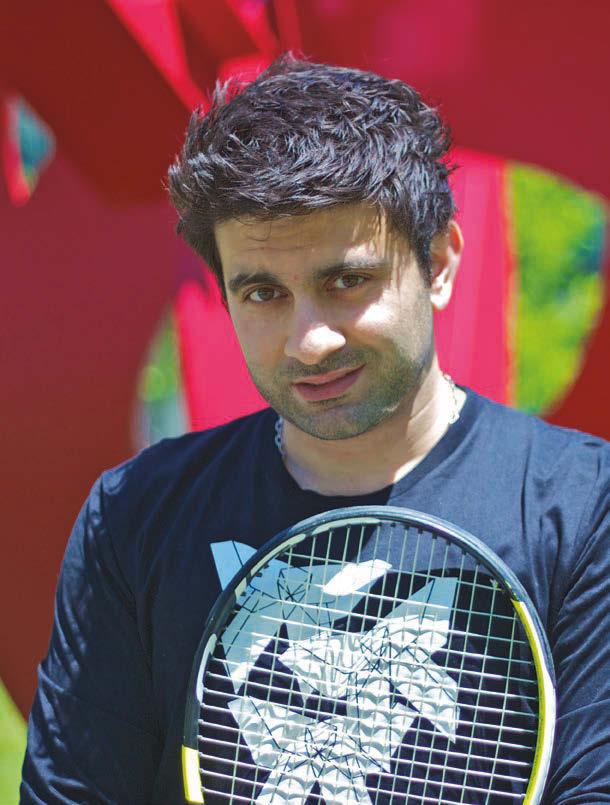

By Gillian Devereux
Time Well Spent
Home is a deceptively simple word. Both a concrete location and an abstract idea, it is the place we currently live as well as the place from which we came. It is a group of people living together as a family, and it is the place where people work together to achieve a common goal. It is the place where something, or someone, belongs.
For the past ten years, Watcharapan Suwansantisuk, known to his friends and colleagues by his nickname Ae, has made LIDS his home. He routinely spends eight to ten hours a day at the lab, taking short breaks to work out or to eat. He arrives early in the morning, his backpack filled with books and research notes. He brings food for his lunch and dinner, and the clothes he will wear to the gym. He comes to the lab every weekday, and sometimes, he admits, he comes in on weekends.
For as long as he can remember, Ae has dreamed of studying at MIT. He says the school has always occupied a small corner of his heart. When he received his acceptance letter from the Electrical Engineering graduate program, he felt both excited and nervous. He had finally achieved his dream.
He felt instantly at home in LIDS and credits his smooth transition from undergraduate to master’s candidate to his program’s supportive faculty and carefully planned curriculum. In his first semester, he took a special course designed to pair new students with potential
research advisors. By his second semester, Ae had found both an advisor and mentor in Prof. Moe Win.
Ae cannot say enough good things about Moe, with whom he has authored four journal articles and fourteen conference papers and filed for a patent. Although he is quick to praise other faculty and researchers with whom he has worked, most notably, Prof. Lawrence Shepp, Prof. Marco Chiani, and Dr. Gerard Foschini, the affection and respect he has for his advisor is abundantly clear. It is Moe who first showed Ae how to formulate a viable research problem. He also prepared Ae for the rigors of an MIT doctoral thesis, and Ae feels his mentor trained him well, teaching him to develop realistic project timelines with clear deadlines, and helping him learn how to identify areas of research best explored with colleagues from different disciplines, who have the tools and expertise needed to find the best possible solution. Ae believes it is this training which enabled him to withstand the intensely stressful weeks leading up to his final thesis defense. He nods his head decisively. “I was prepared”, he says. “I was well trained for this moment.”
Over the past decade, Ae has trained in the classroom and in laboratories. He has interned for the Alcatel-Lucent Bell Labs and worked as a software developer for Microsoft. He has been a visiting scholar at the University of Bologna in Italy and a teaching assistant at MIT. He has submitted papers and presented at conferences
across the country, in Baltimore, New Orleans, Austin, San Diego, La Jolla, San Francisco, and Seattle, and across the globe, in South Africa, Switzerland, Bangladesh, Thailand, and Italy. He has won awards for his papers, his master’s thesis, and his scholarship. He has traveled the short distance between his East Cambridge apartment and his office in LIDS on a daily basis, and each year he makes a longer journey to visit his family in Thailand.
Like many international students, Ae often experiences homesickness before and after a trip. When he returns to America after his yearly vacation, he misses his parents and sister. He misses hearing his native language spoken in the streets, and the familiar tastes and smells of his home country—the food, the people, the warm weather. He has lived in America since 1997, and he has lived in Cambridge since 2002. This may not be the home of his birth, but it is the home he has made, and when he leaves it, he feels the same sense of homesickness that he feels whenever he leaves Thailand. In this sense, Ae has become a man of many homes. But when asked if LIDS has become his home away from home, Ae shakes his head. He says, rather, that LIDS has become his true home, and the people he works and studies with his extended family.
He is eager to describe his collaborations with faculty members, researchers, and students in LIDS and in other MIT departments and labs. It is, he says, a highly effective and productive
environment for scholarship. He explains how it feels to be surrounded by exceptionally talented people every single day. He views it as a challenge and an opportunity. “Where else in my life will I have this chance,” he wonders, “to work with the best, to study with the best, to do my best? Where else do people perform to such a high standard?”
He says that he used to worry about meeting expectations, about performing perfectly all the time, but his experiences at LIDS have taught him that true scholarship means making mistakes and recognizing when other people have knowledge or expertise that you do not. The LIDS model encourages students to collaborate with people in other disciplines, people who may have research methods, analytical tools, or academic perspectives that will enhance and accelerate problem solving. Ae describes various research projects that required input from other departments, such as signal acquisition and frame synchronization projects, and talks enthusiastically about them. It seems, in fact, as if his entire office, from the rows of neatly organized journals to the tower of battered composition notebooks stacked next to his desk, represent years of collaboration.
The notebooks on the bottom of the stack are noticeably thicker. Their pages have expanded to hold years of class notes and research data. Ae has pursued many research interests during his time at MIT, from wide-bandwidth signal acquisition to optimal search strategies
for spread-spectrum signal acquisition to waveform and frame synchronization. His thesis project, though, deals with first-passage-time problems. These problems examine how long it may take a process to reach a critical or target value, a calculation that is complicated by fluctuations in the process itself or the factors that affect it. To an outsider, this type of work may seem purely theoretical, but Ae points out its numerous practical applications.
Specifically, his research centers around a problem that, if solved correctly, helps people identify the point in time when certain corrections, recalibrations, or actions can be taken. Such information is of interest to a wide array of professionals, including stock market analysts, statisticians, astronomers, physicists, and biologists. For example, this data can help stock market analysts predict when a stock will reach a target price – the price at which the stock could be sold for profit, for instance. In engineering, the data derived from this research could influence global communication networks and safeguard time-aware networks, like those that synchronize the time on your cell phone to the time calculated by the nearest cell phone tower. This work could also improve GPS performance. The clocks in the satellites and the receivers that are part of the GPS need to be synchronized, it turns out, to provide an accurate positioning estimation. The time it takes for the signal to go from the satellite to the GPS receiver in your car or mobile device is a crucial element in determining your location,
so if these two components are not in synch, the position your GPS gives you will not be accurate. Ae explains that his interest in synchronized clocks like these led him to his thesis project. Over time, small, nearly undetectable mechanical errors, imperfect electronics, and environmental variations, like gravity and temperature, will affect the performance of a synchronized time-keeping system. Engineers want to keep the time errors among the clocks small and calibrate them when the time errors are significant enough to keep an application from working properly. The difficulty lies in predicting precisely when the clocks need to be calibrated. Ae’s thesis work begins to address this difficulty. In it, he attempts to derive mathematical expressions that will tell people exactly when their clocks must be reset. At the time to reset the clocks, the existing methods for synchronization can be employed to recalibrate the system, at which point synchronization is again possible and the system will be able to perform its intended functions.
Time, like the word home, has always been a difficult concept to define. A well-formulated research problem allows scholars to prove theories and derive information about how time works—how long a process could take, how long a system might endure. Ae explains that such research requires careful analysis and collaboration among many disparate fields, including, but not limited to, mathematics, probability theory, computer science, and electrical engineering. He says that it is always difficult

to measure time accurately. “For instance, I have been at MIT for ten years,” he says. “To some people, that may seem like a long time to stay in one place.” He pauses briefly, looks around his office, and smiles broadly. “To me, though, it was the right amount of time, and time well spent,” he says.
2012 Events @ LIDS
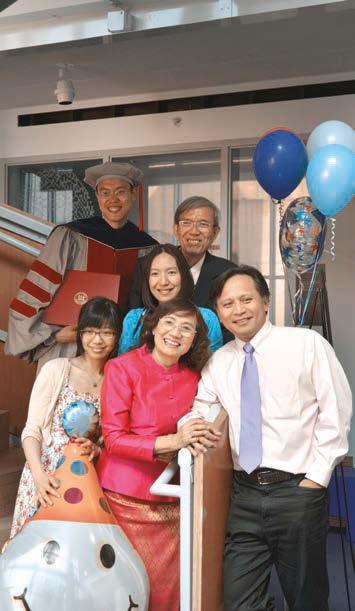
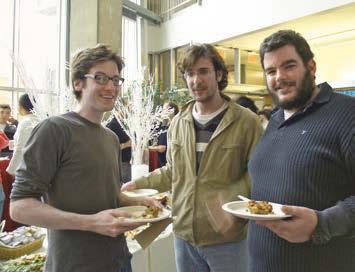

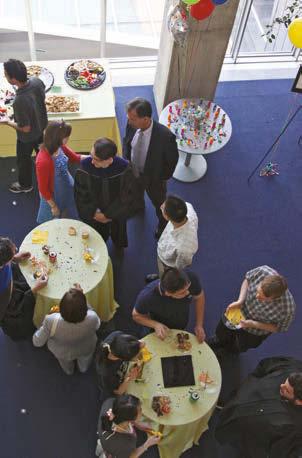
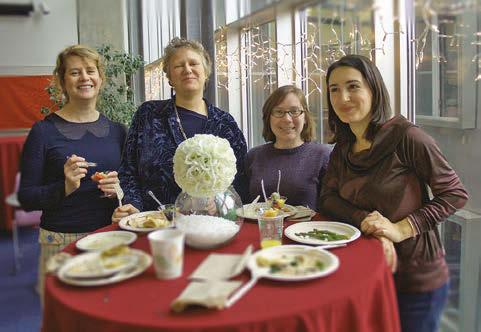
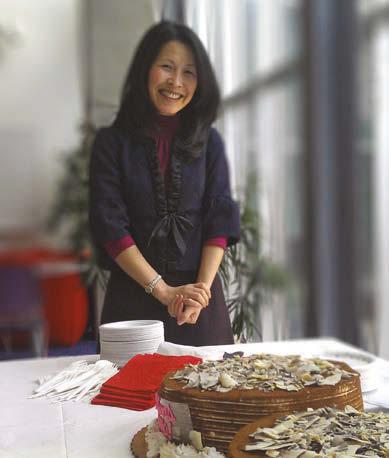
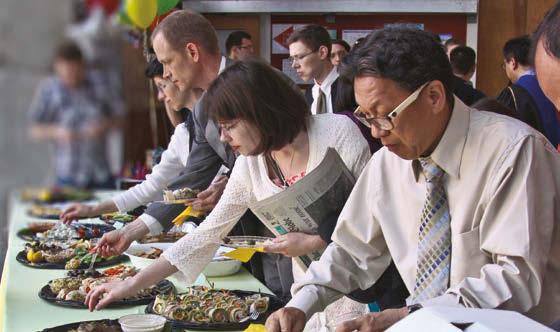

Wireless World
By Ashley Yeager
For nearly a decade, Anant Sahai has been toying with radios smart enough to know how to skip from one channel to another while leaving occupied frequencies undisturbed. The work people conducted on these smart, or cognitive, radios sparked the beginning of the wireless revolution. But for the years prior to 2008, Anant, an Electrical Engineering and Computer Sciences professor at the University of California, Berkeley, and others who studied cognitive radios did so strictly as an academic pursuit. Any other use of the systems was illegal.
Finally, in 2008, the Federal Communications Commission (FCC) opened the radio frequencies that had previously been the sole domain of television broadcasters to other device manufacturers. The freed up frequencies gave cell phone and Internet providers the opportunity to blast tens of megabits per second of data over tens of kilometers. It also allowed them to establish Internet signals and enable faster Web browsing on mobile devices and in trains, planes and automobiles across the country. It moved what was purely academic research on smart radios to the realm of being legal and made it possible for the wireless technology to eventually blanket the country, Anant says.
Anant first became interested in network connections and information flow while working with LIDS professor Sanjoy Mitter as a graduate student from 1994-2000. For his dissertation, Anant explored the ways signals
are transmitted and distorted when traveling through noisy environments, and how those distortions need to be corrected if the signals are going to be used for controlling systems. While his thesis was largely theoretical, Anant says the most important thing he learned at LIDS was the fundamental value of toys and cultivating a playful aesthetic.
Anant spent the year after graduating from LIDS at the startup Enuvis, Inc. (cofounded by LIDS professor John Tsitsiklis and LIDS alum Ben Van Roy), where he got a taste of the practical world while developing algorithms that would make GPS services available inside buildings and cities. At the time, smart phones and on-demand, location-based services were just beginning to emerge in the electronics market. But the location-calculating algorithms of the early 2000s were not sensitive enough to transfer signals from GPS satellites through the maze-like infrastructure of a city, through walls and windows and into tiny, hand-held receivers. At Enuvis, Anant and his colleagues developed new techniques to pick up GPS signals through the clatter of the cityscape. The work ultimately fed into today’s iPhone and Android capabilities: the ability to pinpoint a user’s location on a map and to offer suggestions for nearby restaurants, gas stations and grocery stores.
But what Anant knew from his work at LIDS and Enuvis was that lower-frequency signals, like those used in analog TV broadcasts, pen-
etrated buildings more effectively than what currently existed in terms of Wi-Fi, Bluetooth, or cell-phone connections. So after Anant accepted a position at Berkeley, his undergraduate alma mater, in 2002, he quickly formed a research group where he and his students began to investigate nearly every aspect of cognitive radios and signal transmission. He also became the faculty adviser for the Berkeley chapter of Eta Kappa Nu, the national electrical and computer engineering honor society.
In 2008, Anant’s group was among the first to test the effects of the FCC’s decision to make unoccupied analog channels, called white space, available across the country. Specifically, Anant and his group wanted to see if the resulting increase in bandwidth, or spectrum, actually translated into better wireless capability. They found that connections were up across the board, and that rural area residents gained more spectrum compared to city residents, which was expected, since they started off with fewer occupied channels. However, the FCC’s rules did not always allow the rural residents enough flexibility in managing and powering their connections to overcome the comparatively larger distances the wireless signal needed to travel to reach a cell tower or even a neighbor. “To us, this meant that the FCC’s one-size-fits-all rules were ill-matched to the diversity of the American experience,” Anant says. Consequently, while he and his students favored opening up white spaces to improve Internet connectivity, they were con-
cerned with how the FCC would regulate the current and future growth of the available radio spectrum. By September 2010, the FCC revised its requirements for white space devices operating in TV frequencies, but the agency did not stipulate exactly the way the rules would be enforced and how devices would be certified. The standard regulatory framework was also clunky and slowed innovation, preventing smart radio-frequency devices from adapting. As a result, Anant and his team began to think about a way to build an efficient, “light-handed” regulation system.
The team’s goal is to prevent harmful interference, or cheating, which could happen if a cognitive radio switches to a frequency being used by a digital television channel. To regulate the system, Anant’s group began playing with what Anant calls “the toy extreme of spectrum jails”. The thought is to parallel wireless regulation to the human laws of driving. In this parallel there would be a universal, flexible and simple-to-certify protocol to get devices up and operating, a design similar to the way cars are inspected and have license plates. Individual drivers also use a standard set of laws, like driving on the right, and are monitored by police and issued citations. Similarly, in the team’s plan for transmitters, each one would be licensed and monitored. If cheating happens, the transmitter is “jailed,” meaning it has its data transfer rate slowed (think dial-up versus broadband) and has to “sing” gibberish in a “garbage” frequency,
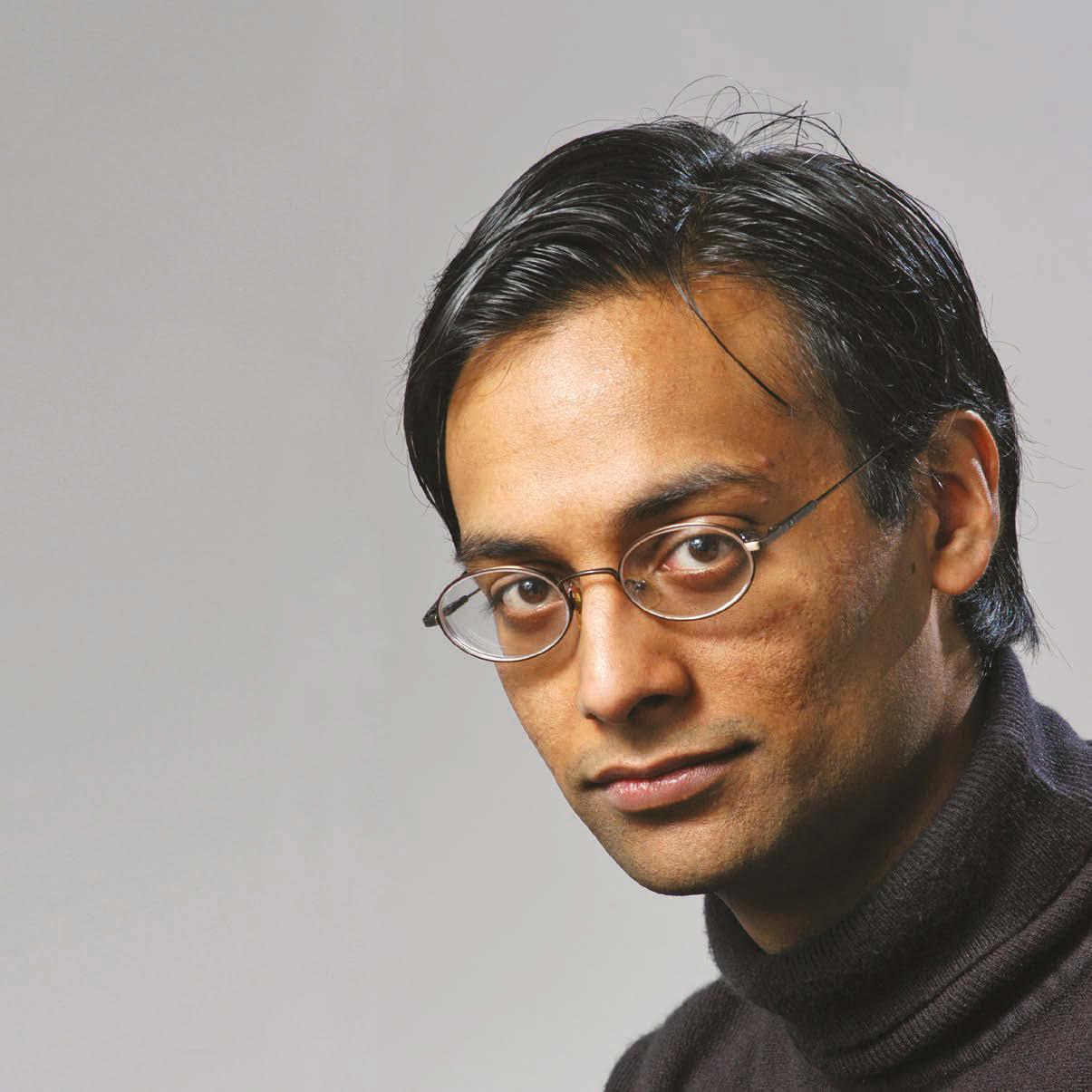
which wastes energy. Instead of mandating one way of doing things, the goal is to simply make it irrational to cheat. This approach also leaves open the possibility of “innovating within the spirit of the rules,” Anant says, an important feature if regulation is to accommodate the many different contexts in which wireless communication needs to be effective.
Understanding exactly what happens when a device gets thrown in the wireless slammer, however, requires that engineers know better how systems use power to both transmit and decode information. Anant says that by drawing on the fresh ideas his students bring to signal processing and tapping into his LIDS work and colleagues, researchers are developing a better sense of the fundamental tradeoffs between the power it takes to send a signal and what it takes to read one. The work being done by Anant and his group has many important and interesting implications. However, Anant is quick to say that doing the sort of research that asks new questions and connects disparate fields together, is also simply fun. It is precisely this kind of cross-cutting research that will -one day -- factor into wireless service that is more widely available, secure and faster.
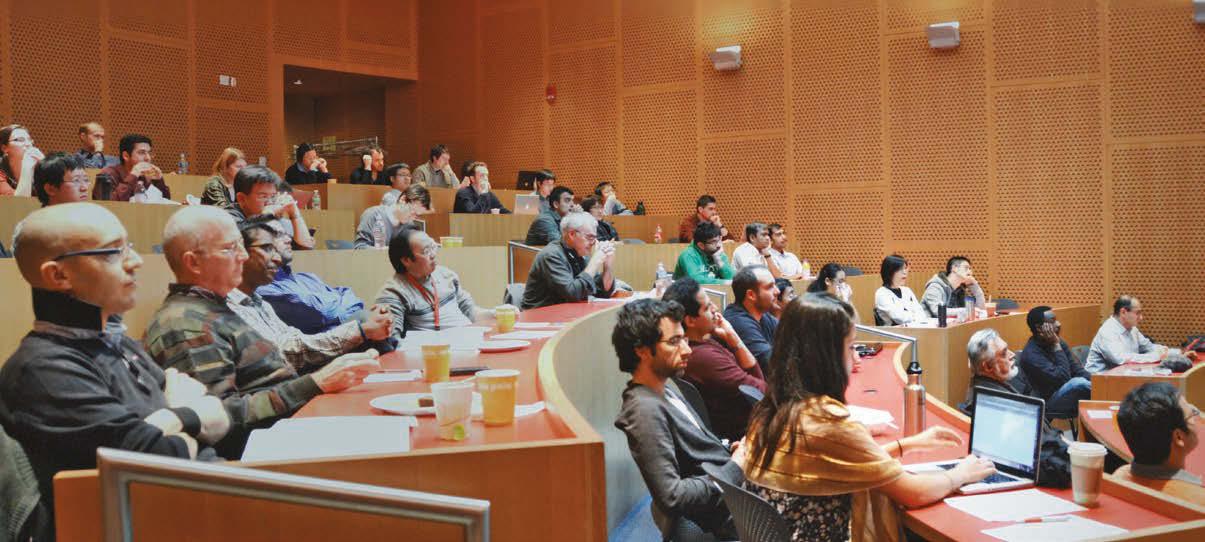
2012 LIDS Student Conference
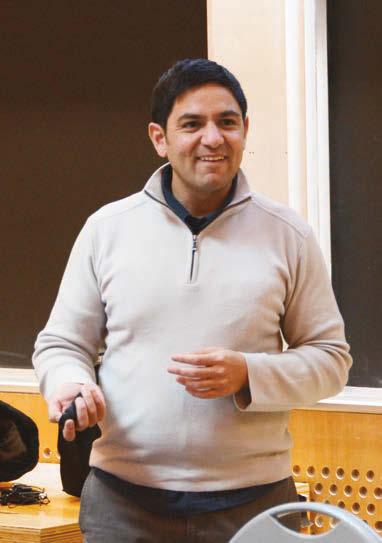
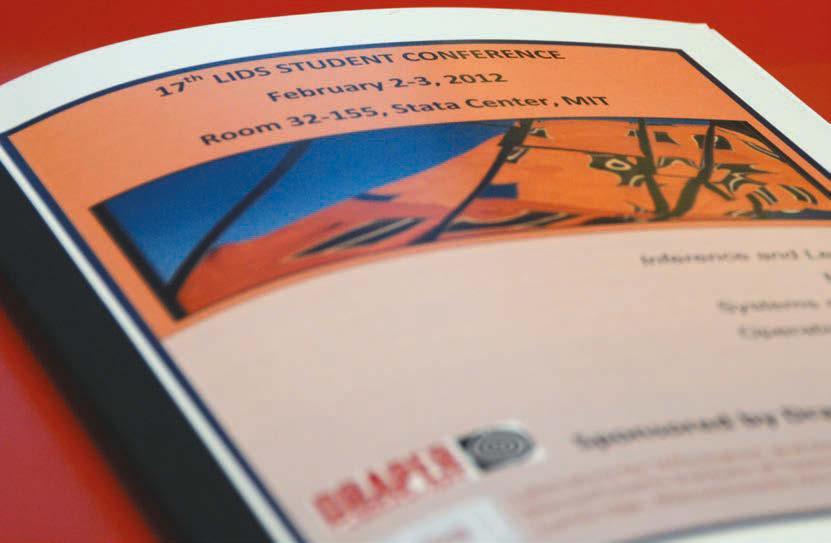
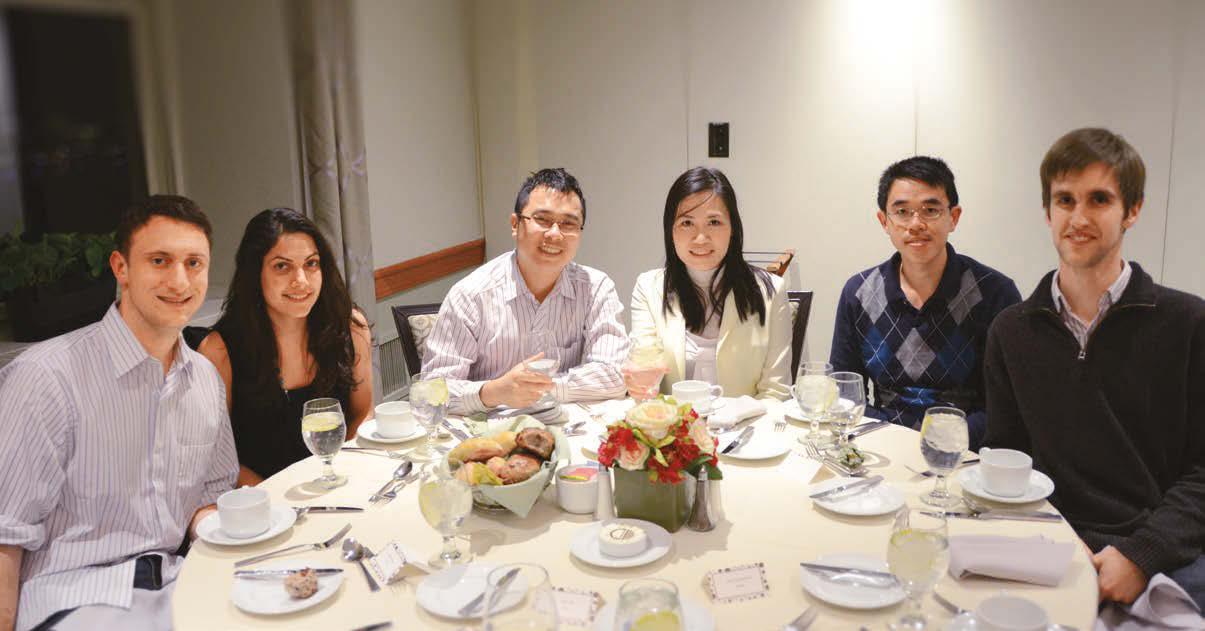
ORGANIZING COMMITTEE
Student Conference Chairs:
Hoda Eydgahi
Mihalis Markakis
Committee Members:
Elie Adam
Ammar Ammar
Kimon Drakopoulos
Ali Faghih
Rose Faghih
Dawsen Hwang
Yola Katsargyri
Christina Lee
Marzieh Parandehgheibi
Sameera Ponda
Hajir Roozbehani
James Saunderson
Kuang Xu
Beracah Yankama
Yuan Zhong
SPEAKERS
Elie Adam
Prof. Emery Brown
Pratik Chaudhari
Annie I-An Chen
Alborz Geramifard
Reza Ghaemi
Prof. Zoubin Ghahramani
Andras Gyorgy
Qingqing Huang
Daw-sen Huang
Oliver Kosut
Chih-ping Li
Ying Liu
Xin Lu
Andrew Mastin
Mohamed Mostagir
Mitra Osqui
Sid Palas
Marzieh Parandehgheibi
Jagdish Ramakrishnan
Hajir Roozbehani
James Saunderson
Yuan Shen
Watcharapan Suwansantisuk
Prof. Claire Tomlin
Prof. David Tse
Theja Tulabandhula
Yunjian Xu
Kuang Xu
Yuan Zhong
Changing Routes

By Ashley Yeager
Every time Georgia-Evangelia Katsargyri drives down Massachusetts Avenue in Cambridge, she thinks about the choices she is making and how changing her habits could help her get a few more miles to the gallon from her roommate’s car. Her mind didn’t always wander down this route on her drives, but since she began working at LIDS, she can’t stop thinking about fuel economy and traffic flow.
Georgia-Evangelia, who jokes that “if you want to choose a more energy efficient way of calling me, you can use my nickname, Yola”, grew up in Greece. As a kid, Yola had little interest in cars or fuel economy. She was fascinated with math. Her father, a mathematician himself, constantly shared his joy for the subject with her, challenging her with “mathematical problems cleverly disguised as games,” she says. “I grew up with that way of thinking. It became intuitive, a way of seeing the world.”
Yola has carried this way of seeing the world into her career choices. As an undergraduate she studied to become an electrical engineer, earning her degree from the National Technical University of Athens in 2006. The summer before she graduated, trying to enrich her knowledge and research experience, Yola came to the U.S. to explore a different academic environment. She visited the California Institute of Technology, where she participated in the SURF (Summer Undergraduate Research Fellowship) program and worked on part of her thesis for her diploma. The trip convinced
her to make a more permanent move to the states to pursue her passion for engineering.
Seeing the dream come true, Yola was accepted at MIT and, upon arriving, was awarded the Paris C. Kanellakis Fellowship, which provided her with an opportunity to redirect her career path. Having focused on electromagnetics as an undergraduate, Yola decided to turn towards the fields of control and optimization. The fellowship, given through MIT’s Electrical Engineering and Computer Science department, was a way to explore several labs and areas of electrical engineering, and it, along with the flexibility of MIT’s academic culture, gave her the freedom to forgo choosing a research area and an advisor as soon as she came to the university. Instead, she was able to explore many options, meeting with professors and talking with other students to find the project and place she was most excited to be part of as she began her work at MIT.
During this exploration process and within the first few days of arriving, LIDS professor Munther Dahleh contacted her with an email she still remembers: “If you have a chance, please stop by my office so we can chat about finding you a research home.” Munther gave Yola an office and started talking with her about his projects. “I was a bit scared my first days at MIT. But Munther and his students made me feel very welcomed. Munther is a person that makes you feel comfortable from
the very first moment, “ Yola says. Meeting LIDS students was also a pleasant surprise for her, as she realized that not only were they doing interesting work, but that they were a group with many interests outside of their research, too – an important balance. Because of the way she was integrated into the team, she had no reservations about joining Munther’s group. From among the many research directions he suggested to her, Yola chose to work on how to optimally control Hybrid Electric Vehicles (HEVs) for increased fuel efficiency. This project was based on a collaboration between Munther’s research group and Ford Motor Company, a combination of working in academia and industry that greatly appealed to Yola. She was also intrigued by the idea of continuing her education by using theoretical tools on an application-oriented project.
HEVs have two power sources: an internal combustion engine, which consumes fuel, and a battery, which can store or provide energy to and from the powertrain unit, the group of components that deliver power to the road’s surface. The vehicle can engage these power sources individually or at the same time. “For most HEVs that are currently on the market, how much each of the two power sources is used depends on the current conditions the car is experiencing, such as the vehicle speed and the torque demand of the moment,” Yola says.
was coming up next on the road,” she adds, explaining that if a driver chooses an exact route using a GPS system, it is possible to know many of the characteristics the car will experience during that route, such as the number of traffic lights and stop signs, speed limit information or slope of the road. “For example, if we know that the car is about to travel downhill we can use the energy currently stored in the battery, because we know that we will replace that energy soon through regenerative braking at the bottom of the hill. This way we can save fuel by using the battery instead of or in addition to the internal combustion engine,” Yola says. Munther’s idea was to program the car to anticipate the features of a route and automatically predetermine the usage of gas and electric power sources to optimize both the fuel consumption and the life of the battery.
“Our idea was to take into account what
Working closely with Ford Motor Company, Munther, Yola, and Michael Rinehart, (another student in Munther’s group), developed a system that meshed the features of the road with the information from the GPS and mapping systems, analyzed the prospective driving route, and established the most fuelefficient pattern of utilizing gas or electric power. To test and evaluate the algorithm that they developed, Yola repeatedly drove the same route through Boston and Cambridge, tracking the speed limits, average driving speeds, traffic lights, stop signs, up-hills, down-hills and any other features that she could factor into how a vehicle traveled on the road. The vehicle
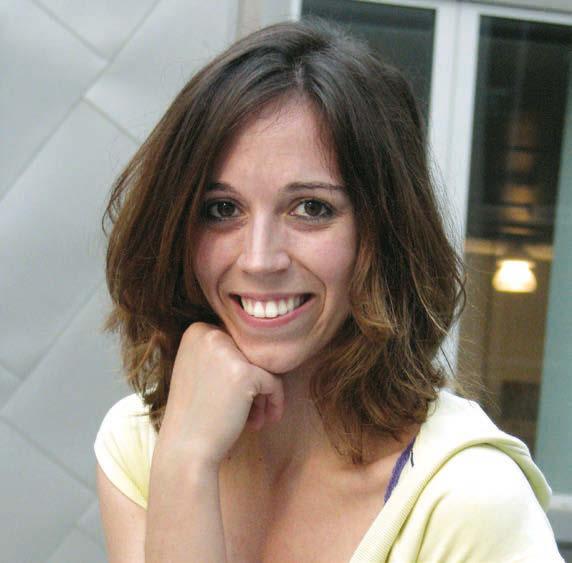
she used, owned by her roommate, was a conventional HEV – without path forecasting – and she used the fuel efficiency of that car as a reference to quantify the benefits of her algorithm. The results showed that this “path forecasting” method, which optimized a hybrid’s engine use, improved the vehicles’ fuel economy by 10-12 percent. This was an exciting result, exceeding the expectations of the project and showing promise of an economically and environmentally friendly solution that could have mass-market appeal. Two US patent applications based on Yola’s research were submitted by the Ford-MIT Alliance in 2011, and in a 2010 press release, Ford Motor Company stated that it is further developing these HEV technologies.
Since the end of the HEV project, Yola has been working with LIDS professor Emilio Frazzoli on the Singapore-MIT Alliance for Research and Technology (SMART) program, a research enterprise established by MIT and the National Research Foundation of Singapore to, in part, transform global transportation systems to meet current economic and environmental needs. Coadvised by both Munther and Emilio, Yola is currently working on the modeling and control of traffic in transportation networks.
Ever since she started working at LIDS, Yola’s mind is always engaged by the job when she’s driving. “Even now, every time I follow that Boston-Cambridge route, I still remember the exact distances between traffic lights! And every time I am in the car, I keep thinking of the most efficient way to drive, the most efficient route to choose and how Ford’s hybrid, with our algorithm embedded in it, would work differently from my roommate’s conventional hybrid,” Yola says. That train of thought leads to an analysis of the drivers around her and of how their decisions lead to traffic and congestion, and then eventually to more metaphorical thoughts, specifically how working at LIDS has given Yola the ability to make her path. “What I like about both of my advisors is the great degree of freedom they give their students. They don’t want to teach you to follow their route; they want to teach you how to create and follow your own,” she says.
LIDS Advisory Committee
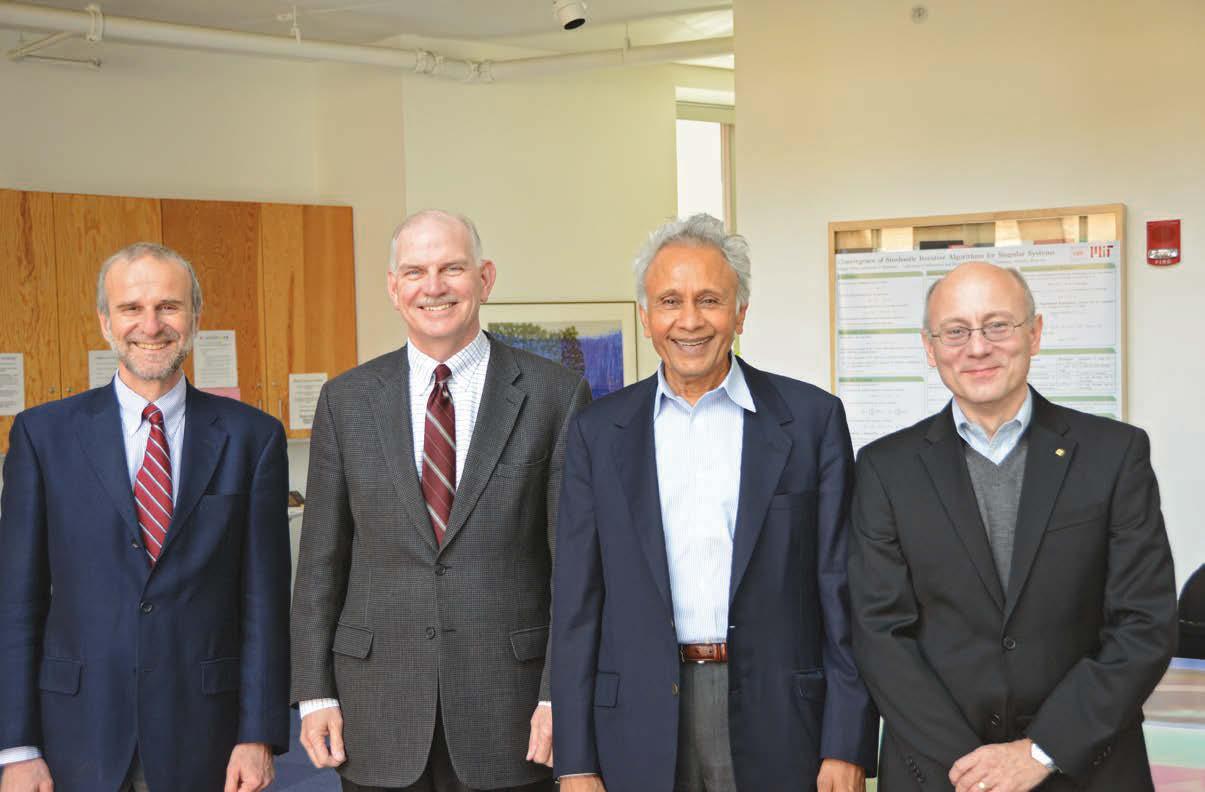
One of the highlights during the past year was the two-day visit of the LIDS Advisory Committee, consisting of four very distinguished leaders in our field. The meeting consisted of presentations by LIDS faculty and scientists, meetings with students and research staff, meetings with the leadership in the major academic departments represented in LIDS and with the Dean of Engineering, and a very well-attended poster session showcasing several of our students and their research. This was a very exciting meeting, and we received valuable advice from the committee that can help us continue to maintain LIDS as a vibrant and world-leading community.
From left to right: Prof. Manfred Morari, Head of the Automatic Control Laboratory at ETH in Zurich, Switzerland; Prof. H. Vincent Poor, Dean of the School of Engineering and Applied Science at Princeton University; Prof. Pravin Varaiya, Department of Electrical Engineering and Computer Science at the University of California, Berkeley; Dr. Henrique Malvar, Chief Scientist of Microsoft Research
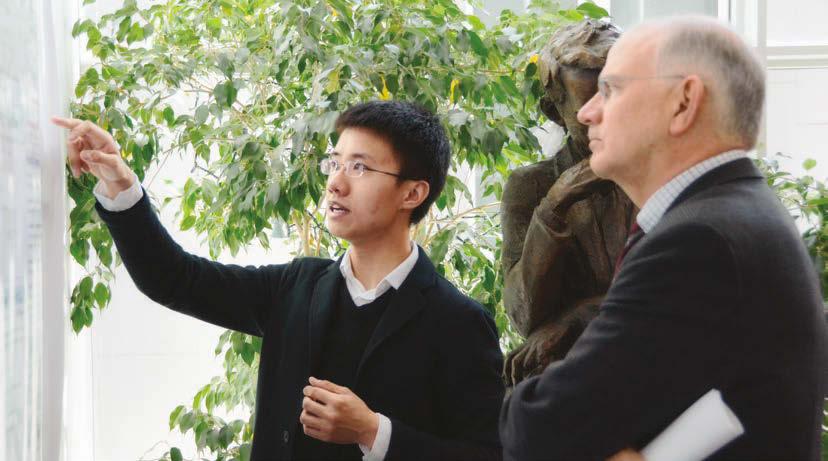
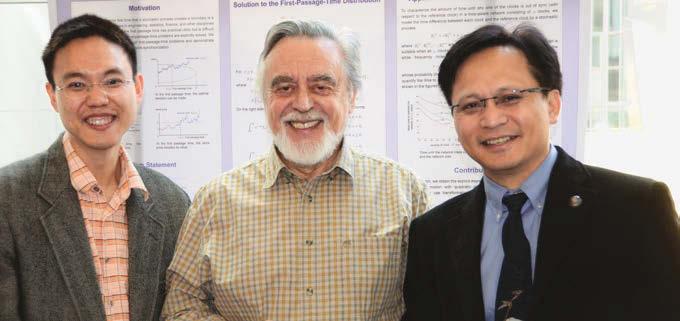
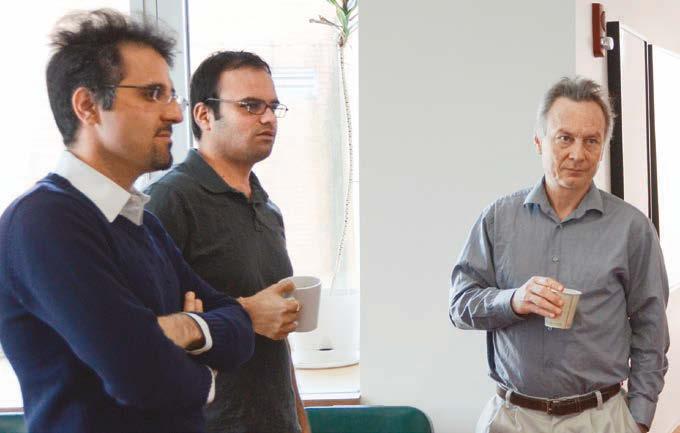
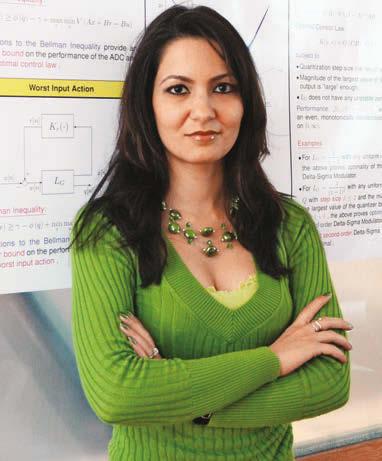
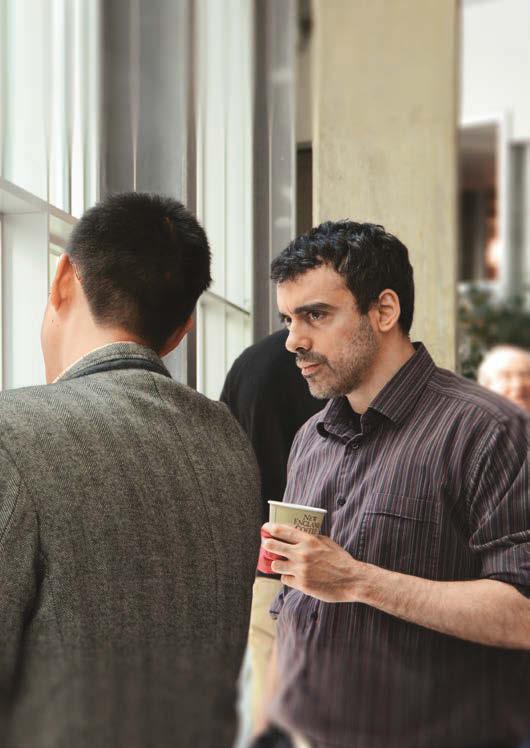

Navigating the Skies
by Rachel VanCott
A fleet of unmanned aerial vehicles is flying on a military surveillance mission. There’s no central controller, and no human hand directing the vehicles as they zoom over the landscape. Instead, each of the agents navigates according to an algorithm--a set of rules and assumptions. Members of the networked fleet send messages back and forth wirelessly and the fleet ticks through the mission checklist, task after task.
At least, that’s how events would play out in a simulation.In the real world, howev -
MIT Professor Jonathan How finds interesting. The Aeronautics and Astronautics professor has spent most of his career working on problems that have both a strong theoretical component and also clear utility—problems that demand theoretical frameworks that can withstand the challenging unpredictability of real-world situations.
To the average person, the importance of using theoretical techniques to solve real-world problems seems obvious. But applied work isn’t always popular within the research community.
“The reason you get up in the morning is the challenge of figuring it out. Can we do this? Can we make this work?”
er, missions are plagued by the unexpected. Communications between members of the fleet might be jammed, or just fail. One vehicle might become disabled. Another might sense new information that could drastically impact the mission. The workload may need to be rebalanced across the fleet. But no one vehicle within a distributed multi-agent system like the one described has the authority to decide what the group will do. So how can a decentralized fleet make decisions in the moment, and cope with the uncertainty of real world? This is one of many types of problems that
Even a few years ago Jon notes other researchers might have looked down on applied problems like those he solves, preferring instead to focus on pure theory. In more recent times however, Jon said he’s seen a shift in his field—a larger number of scientists and engineers are recognizing that the chasm between theory and application is worth bridging, and that working in that area can offer undeniable value to funding agencies.
Jon’s research group at MIT, the Aerospace Controls Laboratory, specializes in solving problems that lay in the overlap between theory and application, just as he does.
“We have more theory than a lot of groups that do application and more application than a lot of folks that do theory,” said Jon, “that doesn’t mean that every student is necessarily doing both well, but as a group we’re able to communicate with each other well and work together as a group and accomplish more as a unit than we would individually…within the combination, we’re better than most.”
Jon notes that even though he’s interested in applied problems, the complexity of the work, not just the application, is a big motivating factor.
“The reason you get up in the morning,” he says, “is the challenge of figuring it out. Can we do this? Can we make this work?”
In the case of the networked autonomous aerial vehicles described earlier, Jon’s answer was a qualified “yes.” For this problem, Jon and his students proposed an algorithm that could efficiently handle situations of distributed decision making in unmanned vehicle networks. The algorithm, known as the consensus-based bundle algorithm, or CBBA, offers a faster way for multi-agent systems to come to an agreement on what’s happening in the world and how the agents should redistribute or scale down mission tasks based on that common understanding. That means that even when the going gets rough, the fleet can still accomplish some of the mission objectives. Jon is also responsible for the development of a novel facility that makes it easier and faster for researchers to bring their theoretical solutions out of simulation and into a more realistic environment, and also prototype new hardware.
This facility, created in 2007 as part of collaborative work with the Boeing Corporation, is known as the Real-time Indoor Autonomous Vehicle Test Environment, or RAVEN for short. The facility is outfitted with motion capture cameras that track a vehicle’s every move, and also features a test-bed of vehicles on which algorithms can be deployed. The conditions in RAVEN are less unpredictable than in the real world, where the environment can change from day to day, or even hour to hour, but it’s still more realistic than simulating conditions entirely within a computer. “[RAVEN] has limitations,” said Jon, “and yet it’s a step up… It’s a place in which I can do stuff in hardware as a stepping stone to where I’d like to do it, which is outdoors.” RAVEN has proven such a success for the Aerospace Controls Laboratory that, Jon says, other facilities like it have been built in academic and national laboratories across the country.
Jon has made his academic career in part by proposing ways for autonomous vehicles to solve planning problems—hard decisions that must be made in sub-optimal conditions. But he describes his own navigation through life as a series of comfortable choices. Each decision flowed naturally from the last.
“I never really felt like I had to sit there and think: what should I be doing?” Jon said, “It was obvious. When I look back it seems inevitable.”
Jon’s family moved frequently when he was a child because of his father’s job within the United Kingdom’s Royal Air-Force. Even af-
ter his father retired from the military and the family moved to Canada, they kept moving.
As a young man in high school, Jon didn’t know any scientists or engineers. So when the time came for him decide what to study in college, he just chose to study what he liked—mathematics and engineering science—in a subject area with which he was familiar—aerospace. In college, he met graduate students and learned about career options in science. He came to MIT for his Master’s Degree and PhD and was subsequently offered a post-doctoral position at MIT and then a professorship at Stanford University. Just as he was looking for a change, he was asked to come back and be a professor at MIT. At MIT, Jon found his work emphasis shifting to information gathering, environmental modeling and uncertainty reduction in multiagent systems. Naturally, his connection to the theory-rich Laboratory for Information and Decision Systems strengthened.
Most recently, Jon and a team of professors from MIT and several other universities received funding the National Science Foundation to explore how multi-agent systems could be used to observe environmental phenomenon, like weather patterns over the Pacific Ocean. The project grew into a related work, funded by the Office of Naval Research, for which the researchers started studying similar systems in adversarial environments. As usual, this new project is a blend of theoretical planning problems and practical appli-
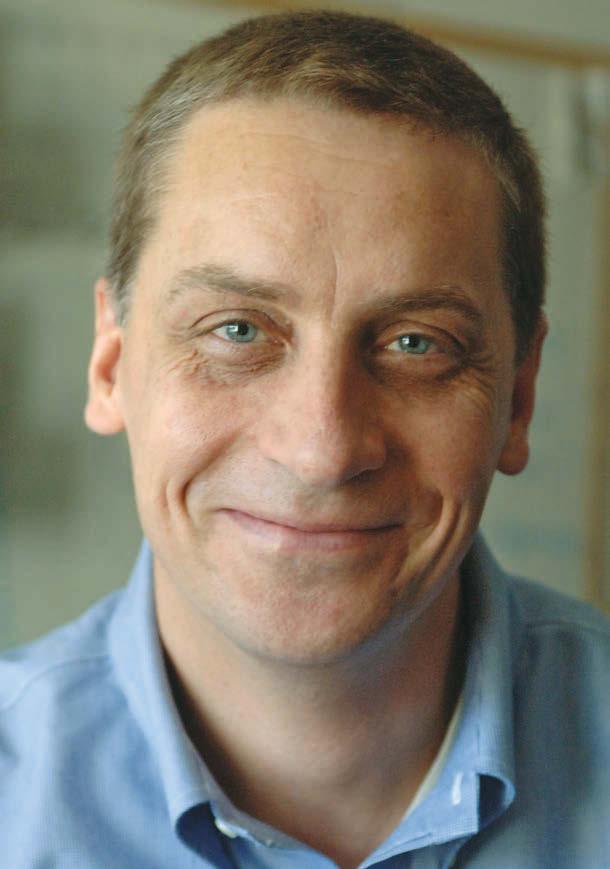
cation. The specific application may change, but the invigorating challenge of figuring things out is always there in the background.
“I was trying to describe to somebody once what it’s like to have this job,” Jon said, “You get paid to learn, and you never really have to stop learning.”
Sound Bites: Brian Jones
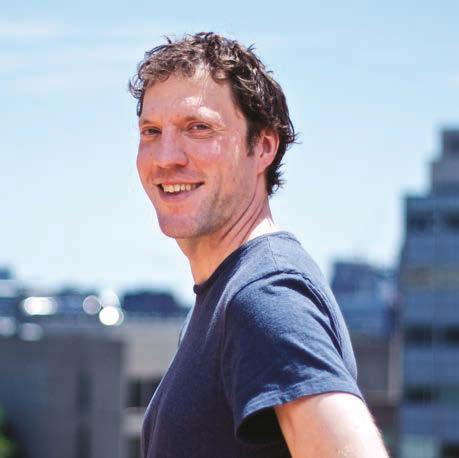
What do you do at LIDS?
I’m the Systems Administrator for LIDS, which means I’m responsible for the computing infrastructure at the lab. A lot of my job involves providing IT support for the professors, researchers, and students working here.
What do you most enjoy about working in LIDS?
This sounds like a cliché, but my favorite thing about LIDS is the people who work and study here. This lab often operates like a large family of people who share similar intellectual interests, and I enjoy being part of that dynamic. I remember we used to hold more social events,
things like movie nights or lab lunches that gave the students, professors, and staff members the chance to get to know each other in a more personal way. We still have award banquets, conferences, and student socials, but I would like to see LIDS host more social activities for the entire LIDS community. I have been lucky enough to develop relationships with different professors and students in the lab, and I would like people who join LIDS in the future to have the same opportunities to build friendships that I had.
What were you doing before you came to LIDS?
I came to LIDS in 2006, when they needed some extra help with IT. I worked in both CSAIL (the Computer Science and Artificial Intelligence Lab) and LIDS for several months, and eventually I was offered a full time job in this lab. Before I started working at LIDS full time, I worked at CSAIL in a similar capacity. There is a lot of collaboration between CSAIL and LIDS, so I still see many of my former colleagues and sometimes work with them on various projects.
I also did quite a bit of traveling before I joined LIDS. I went to Reno in 2003 for six months with the idea of becoming of a professional poker player. That turned out to be much harder
than it sounded, so I came back to Massachusetts to work in CSAIL. In 2005, I spent six months in China sightseeing, practicing my Chinese, and trying to cook traditional Chinese food.
What made the biggest impression on you when you were in China?
Before I went to China, I didn’t know much about regional cooking. Chinese cuisine has so many different styles, and the food varies widely from region to region. Many dishes that Americans think of as authentic Chinese food have been modified to accommodate Western palates. I ate spicier food in China, and I ate snake, camel, and scorpion for the first time.
What career did you envision yourself having when you were in college?
I went to Penn State where I studied Economics. At the time, I didn’t really know what I wanted to do professionally, but I thought I might become an actor. I originally moved to Boston to become a stage actor. I didn’t have any friends in New York City, and I didn’t have enough money to live on my own, so I came to Boston because it seemed to have more opportunities for acting than Pennsylvania, and I knew people who would let me sleep on their couch.
How many plays have you been in?
One. It was a really small role, but I was very excited about it.
What do you like doing in your free time? Do you still act?
No, but from time to time, I’ve volunteered to work behind the scenes for some local plays and film productions. I helped build sets for a play produced at MIT, and I was the boom operator for a film in the 48 Hour Film Project. I spend a lot of my free time cooking, primarily Chinese and Indian food, although recently I’ve been trying out a lot of recipes from Mark Bittman’s new cookbook How to Cook Everything: The Basics. I am also interested in the history of cocktails and bar culture, so I like to read about different classic cocktails and then try out my own variations.
What are your plans for the future?
I am not as restless as I used to be, so I feel more content in my life and my work. I can easily see myself staying in my current field for the foreseeable future. I have developed a sense of ownership here at LIDS, and I want to make some tangible contributions to the lab and to the LIDS community. On a more personal level, my plans for the future include taking more foreign language classes, possibly Japanese or Chinese, perfecting my version of the Corpse Reviver Number 2 (a classic ginbased cocktail), and learning how to cook fish.
LIDS Awards & Honors
Congratulations to our members for the following achievements!
Awards
Amir Ali Ahmadi received the 2012-2013 IBM Goldstine Fellowship. He is supervised by Prof. Pablo Parrilo.
LIDS alum Kush Varshney was awarded the IBM Research Division Award, Business Impact of Outsourcing Analytics, 2012.
Ozan Candogan was awarded a Microsoft Research PhD Fellowship for 2012. He is advised by Profs. Ozdaglar and Parrilo.
Ali Faghih received the Best Poster Award, Energy Research Seed Fund Program, by the MIT Energy Initiative in March, 2012. He is supervised by Prof. Munther Dahleh.
LIDS Assistant Director for Administration
Debbie Wright received the School of Engineering’s 2012 Infinite Mile Award for Excellence.
Prof. Pablo Parrilo is the recipient of the 2011 Antonio Ruberti Outstanding Young Researcher Award of the IEEE Control Systems Society.
Prof. Jon How was awarded the 2011 National Instruments Graphical System Design Achievement Award (Education category).
Prof. Dave Forney was awarded the 2011 Aaron D. Wyner Distinguished Service Award of the IEEE Information Theory Society.
LIDS graduate Kush Varshney won the IBM Research Technical Accomplishment Award, Software Group Sales Analytics, 2011.
Honors
Prof. Sanjoy Mitter was the John van Neumann Visiting Professor in Mathematics at the Technical University of Munich, Germany. Prof. Mitter was also the Ulam Scholar at the Los Alamos National Laboratory.
Prof. Eytan Modiano was made an IEEE Fellow in January, 2012.
Prof. Moe Win was elected Fellow of the American Association for the Advancement of Science (AAAS), for distinguished contributions to the foundations of network navigation and communication. Prof. Win was also awarded the IEEE Kiyo Tomiyasu Award, the IEEE Technical Field Award for fundamental contributions to high-speed reliable communications over optical and wireless channels, 2011. Prof. Win was elected a Fellow of the Institution of Engineering and Technology in 2011, as well.
Prof. Munther Dahleh was named the Associate Department Head of EECS, 2011.
Prof. Pablo Parrilo became a Co-Associate Director of LIDS, July 2011.
Prof. Moe Win received the Copernicus Fellowship at the Universita degli Studi di Ferrara, Italy, 2011. Prof. Win was also promoted to Full Professor in the Aeronautics and Astronautics department in June 2012.
Prof. Devavrat Shah was promoted to Associate Professor with tenure in the Electrical Engineering and Computer Science department in June 2012.
Paper Awards
The paper entitled “An Incremental Samplingbased Algorithm for Stochastic Optimal Control” by Vu Huynh, Sertac Karaman, and Prof. Emilio Frazzoli was a finalist for the best student paper award at the IEEE International Conference on Robotics and Automation.
Prof. David Gamarnik and his former student Dmitriy Katz have received the 2011 Best Publication Award from the INFORMS Applied Probability Society.
Prof. Yury Polyanskiy received the 2011 Information Theory Society Prize Paper Award, jointly with his advisors H. Vincent Poor and Sergio Verdu.
Watcharapan Suwansantisuk and Prof. Moe Win, together with Prof. Marco Chiani (University of Bologna), received the 2011 IEEE Leonard G. Abraham Prize.
.
Prof. Moe Win, with student Damien B. Jourdan and colleague Prof. Davide Dardari, won the M. Barry Carlton Award of the IEEE Aerospace and Electronic Systems Society, 2011.
Yuan Shen, Santiago Mazuelas and Prof. Moe Win received the Best Paper Award at the 2011 IEEE Global Communications Conference. They also won the Best Paper Award at the IEEE International Conference on Ultra-Wideband (ICUWB) 2011.
Kuang Xu received the First Place prize in the 2011 INFORMS George Nicholson Student Paper Competition. He is supervised by Prof. John Tsitsiklis.
Thesis Awards
Venkat Chandrasekaran received the Jin-Au Kong Outstanding Doctoral Thesis in Electrical Engineering Award. He was under the supervision of Prof. Pablo Parrilo and Prof. Alan Willsky.
Myung Jin Choi is one of the winners of the 2011 George M. Sprowls Award, an award given to the best computer science theses at MIT. Jin was supervised by Prof. Alan Willsky.
LIDS
Colloquia & Seminars
2011-2012
Weekly colloquia & seminars are a highlight of the LIDS experience. Each talk, which features a visiting or internal invited speaker, provides the LIDS community an unparalleled opportunity to meet with and learn from scholars at the forefront of their fields.
The Stochastic Systems Group seminar schedule can be found at: http://ssg.mit.edu/cal/cal.shtml
Listed in order of appearance.
Youssef Marzouk
MIT
Aeronautics and Astronautics
Aaron Wagner
Cornell
Electrical and Computer Engineering
Ali Sayed
UCLA
Electrical Engineering; Adaptive Systems Laboratory
Patrick Jaillet
MIT
Electrical Engineering and Computer Science;
Operations Research; LIDS
Pramod Viswanath
U. Illinois, Urbana-Champaign
Electrical and Computer Engineering
Eero Simoncelli
NYU
Neural Science, Mathematics and Psychology
Edward Farhi
MIT
Physics
Vivek Goyal
MIT
Research Laboratory for Electronics
Larry Blume
Cornell
Economics; Information Science
Frank Schweitzer
ETH
Systems Design
Abbas El Gamal
Stanford
Electrical Engineering
Aurel Lazar
Columbia
Electrical Engineering
Alessandro Vespignani
Northeastern College of Computer and Information Science
Domitilla Del Vecchio
MIT
Dept. of Mechanical Engineering; LIDS
Alexandre Bayen
UC Berkeley
Dept. of Civil and Environmental Engineering
Larry Carin
Duke
Electrical and Computer Engineering
Karen Willcox
MIT
Aerospace Computational Design Laboratory
Fernando Paganini
ORT University, Uruguay
Engineering
Saurabh Amin
MIT
Dept. of Civil and Environmental Engineering
Anima Anandkumar
UC Irvine
Electrical Engineering and Computer Science
Dimitris Bertsimas
MIT
Operations Research Center
Robert Kleinberg
Cornell
Dept. of Computer Science
Mihaela van der Schaar
UCLA
Electrical Engineering
Kevin Tang
Cornell
Electrical and Computer Engineering
